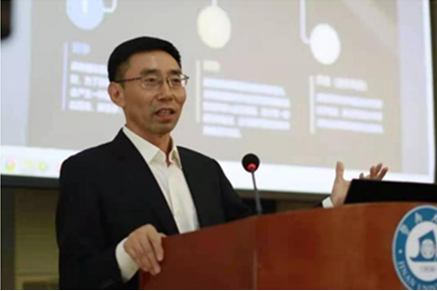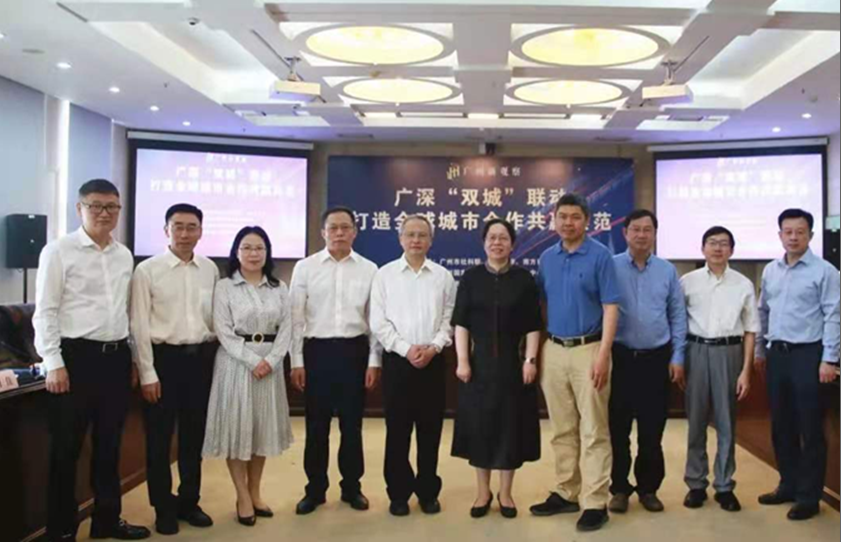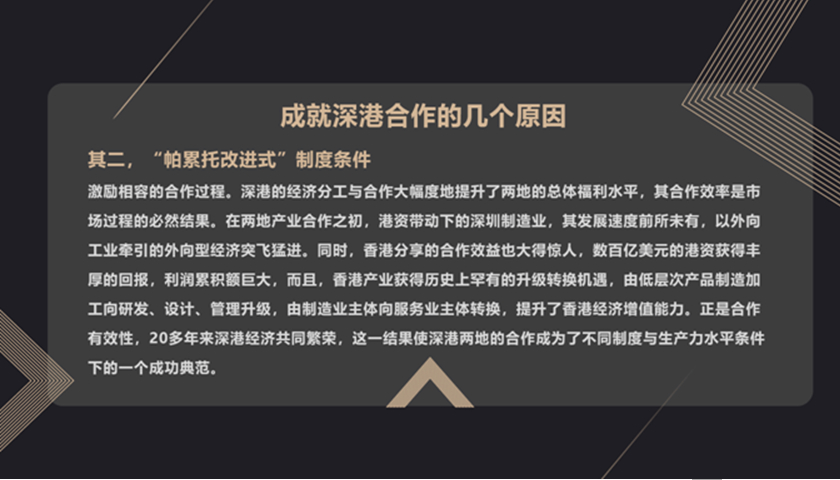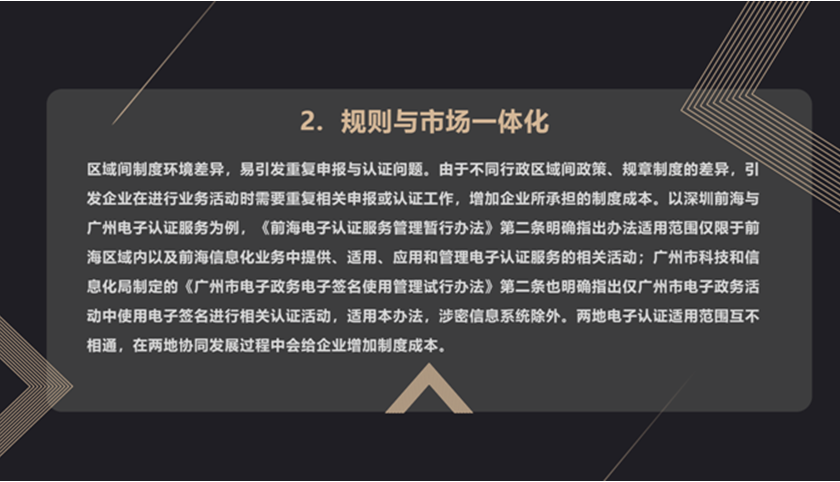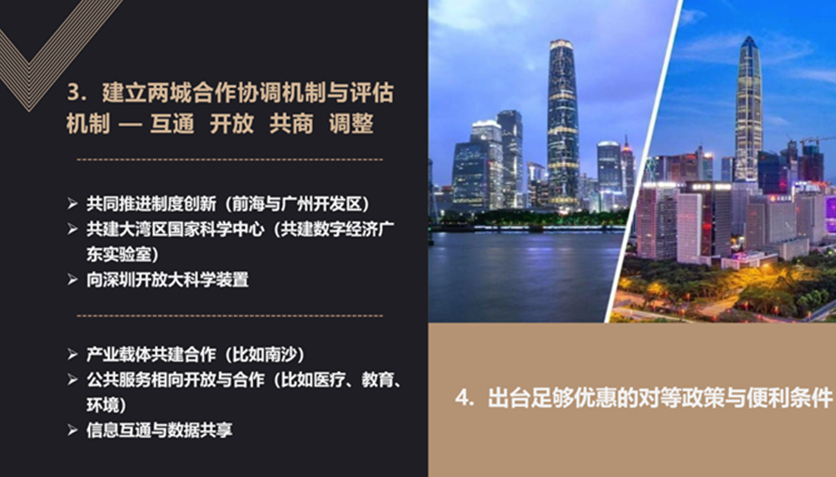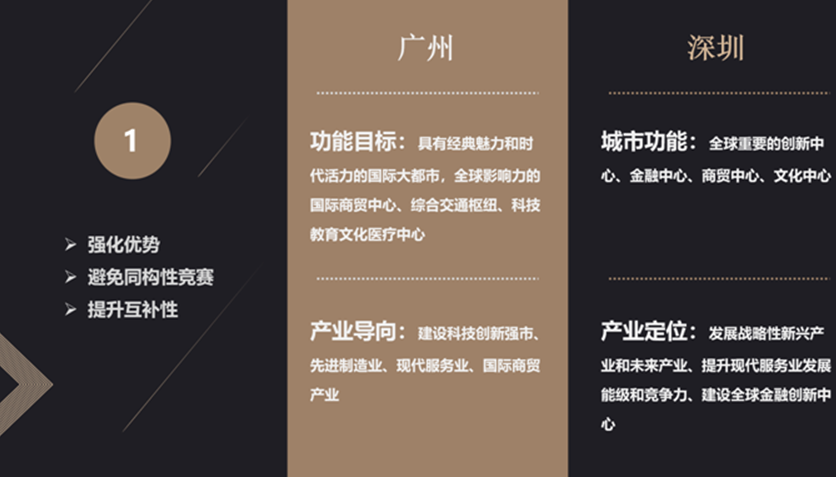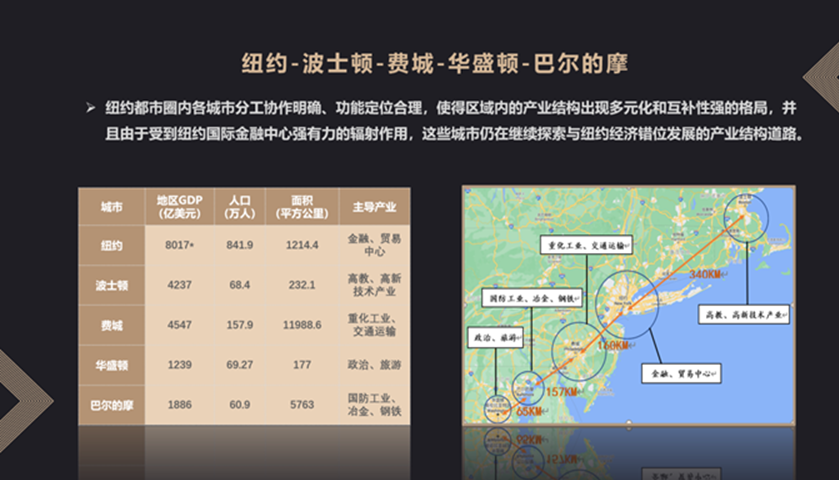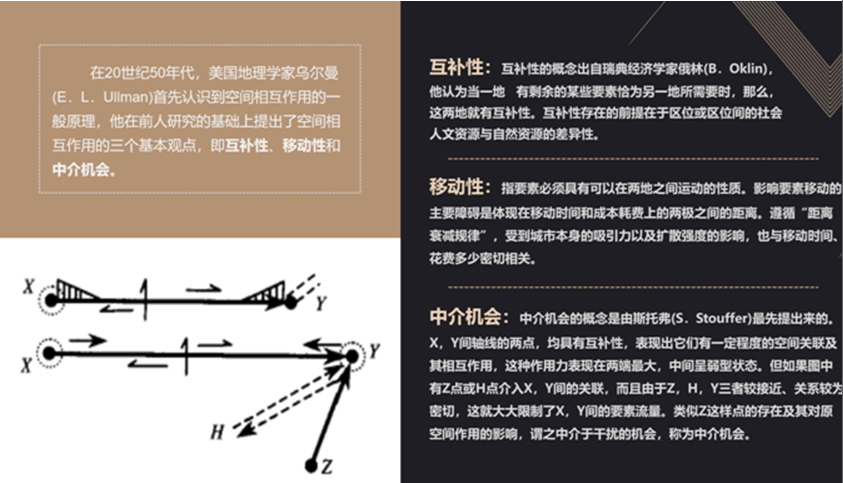On the morning of April 23, 2021, Prof. Yuan Yiming was invited to attend the 47th academic round table conference on “Guangzhou New Observation” in Jinan University. At the conference themed “Guangzhou-Shenzhen Cooperation: Build a Global Model of Win-Win City Cooperation”, Prof. Yuan gave a keynote speech.
Prof. Yuan elaborated on his opinion based on the topic of “Considerations on Guangzhou-Shenzhen Cooperation and Development”. He proposed three types of city epistemology: the Organicism, the Biognosis and the Ecological Theory of Urban Relationship, explained that 3 relationships are existing in cities: competition, predation and commensalism, and described the development progress of cities. And he pointed out that the spatial difference between regional economic development factors and relating non-economic development factors is primary driver behind the economic and non-economic spatial activities between cities, and between urban and rural areas in the regional city groups. Then, through analyzing “New York-Boston-Philadelphia-Washington-Baltimore”, Greater Tokyo Area and especially the specific city cases (for example, Shenzhen and Hong Kong cooperation), he provided suggestions for Guangzhou and Shenzhen cooperation: the two-city cooperation should strengthen the advantages of both cities, avoid homogeneous competition, improve complementarity, further improve the integration level of rules and market, build the coordination mechanism and the assessment mechanism for the two-city cooperation, and introduce sufficiently concessional reciprocity policies and convenience.
The experts and scholars
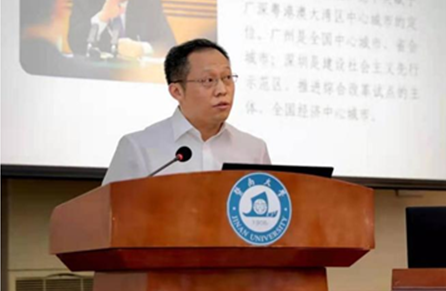
Li Bin — Deputy Director of Policy Research Office of Guangdong Provincial Committee and Deputy Director of Financial and Economic Office of Provincial Committee
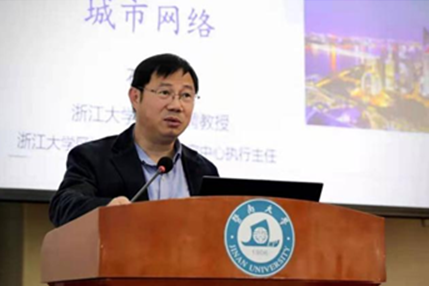
Shi Minjun Director of Xiong'an Development Center of Zhejiang University
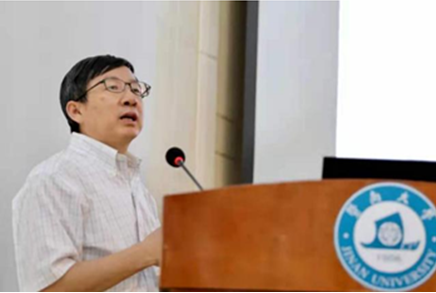
Tan Chenglin Dean of Economic Development Research Office of Jinan University for King Wai Guangdong-Hong Kong-Macao Greater Bay Area
Yuan Yiming Deputy Director of China Center for Special Economic Zone Research (CCSEZR)
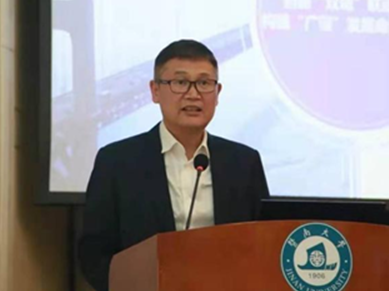
Chen Yongpin Standing Vice President of Aoyuan Technology Group
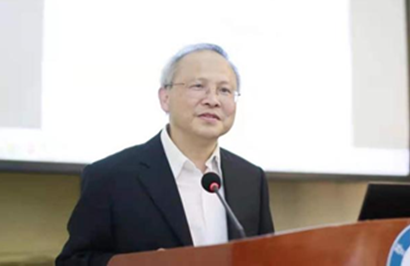
Liu Yunzhong Department of Development Strategy and Regional Economy of Development Research Center of the State Council
Views from Prof. Yuan Yiming (extract)
Moderator:
What are the interrelations between the two world-class first-tier cities of less than 100 kilometers apart — Guangzhou and Shenzhen?
Prof. Yuan Yiming:
The interrelations between cities are the same as the those between different creatures or species in nature, and are a type of “ecological relationship”, which includes 3 relationships: competition, predation and commensalism. After decades of competition between Guangzhou and Shenzhen, their cooperation and optimization now make their relationship become commensalism. Two great cities work together and integrate to produce a strong impetus for further development and a significant driving force for the development in the Guangdong-Hong Kong-Macao Greater Bay Area.
The spatial difference between regional economic development factors and relating non-economic development factors is the essential reason behind the economic and non-economic spatial activities between cities, and between urban and rural areas in the regional city clusters. And the essential reason for Guangzhou and Shenzhen begins to reveal. “It is exactly the otherness between the two cities that makes them complementary”. By borrowing the three basic views (namely complementarity, transferability and intervening opportunities) for spatial interaction put forward by E. L. Ullman, an American geographer, after analyzing the relationships between Guangzhou and Shenzhen, I believe Guangzhou and Shenzhen have comparative advantages of urban functions, the otherness of resources and industrial structure, and the objective conditions of convenient transportation and short distance for elements moving between two cities. But they have weakened the urgency of their cooperation through other intervening opportunities provided by their respective adjacent areas, thus postponing the starting time of their cooperation.
Globally, the New York Bay Area, the Tokyo Bay Area and the San Francisco Bay Area have a clear division of labor and reasonable functional positioning. This makes the regional industrial structure become more diversified and complementary. They are constantly exploring an industrial structure of coordinated economic development. This also provides a very good inspiration for the future cooperation between Guangzhou and Shenzhen in terms of their respective urban function positioning and industrial positioning.
Moderator:
Guangzhou and Shenzhen have the theoretical and realistic basis for the cooperation and a bright prospect for development. So what should the two cities do in the process of the two-city cooperation?
Prof. Yuan Yiming:
For Guangzhou and Shenzhen, the two-city cooperation should strengthen the advantages of both cities, avoid homogeneous competition, improve complementarity, further improve the integration level of rules and market, build the coordination mechanism and the assessment mechanism for the two-city cooperation, and introduce sufficiently concessional reciprocity policies and convenience.
Conference Photos
Lecture Contents



